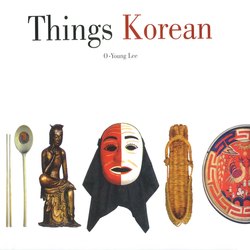Читать книгу Things Korean - O-Young Lee - Страница 18
ОглавлениеPaddy Paths
Nongil
Most foreigners when they see the Korean countryside feel they are "looking at an Oriental painting." Gheorghiu, the author of The 25th Hour, described it differently. He described his impression of the Korean countryside as something akin to the lines in a work of calligraphy. The reason Gheorghiu used calligraphy to describe the countryside is because he was describing not some mountain scene but the circuitous paths which meander through Korea's rice paddies.
The twists and turns in those paths of the old days reminded one of the scenes of nature evoked in a certain intricate calligraphy of a classical Chinese master. The scene he rendered was a pictograph singing in the most reverberating tones of the village life the paddy paths were so much a part of. Recent developments in agricultural planning, though, have gone and straightened out all those paths.
Spread out a map of the world and you can see, in the way the borders between most countries snake around seemingly without rhyme or reason, that it resembles a bird's eye view of the paths which wind their way across Korean rice paddies. No matter how man tries to draw his own borders, they are basically drawn for him by nature's mountain ranges and rivers.
Look again, though, at a map of North America. You see that long, straight line that is the border between Canada and the United States, as if it were drawn with a ruler. Not coincidentally, inside this geometrically straight line was formed that which is symbolized by American culture, modern-day industrialization. We have at work here the draftsman's ruler, certainly not the calligraphy brush which painted the Korean paddy path.
If American culture was formed inside that geometric boundary to its north, what is this culture that was formed within those paddies of twisting bends and curves? Professor Carl Dohr once said that rice farming can never become mechanized to the extent of, for example, rye fanning. The nature of rice farming destines it to stubbornly resist seeding and fertilizing from the air, huge tractors reaping and threshing.... Rice requires preparing and tending the bed for seedlings, transplanting them at just the right time, constant weeding, and all day on the sluices to make sure the rice plants get just enough water. A Westerner witnessing this would exclaim that this is more gardening than fanning. And indeed one could say that the Korean farmer is more a gardener than he is a farmer.
Westerners, in order to harvest twice as much, initiated both the measures and the technology to extend their plots to twice their original size. Out of this "frontier spirit" came that which we know, in political terms, as expansionism and colonialism.
Rice fanning Koreans, though, if they want to harvest twice as much, simply give two times more devotion to their small plot. If it needs to be weeded once, do it twice, and if it needs to be weeded twice, do it thrice. Rice is a crop which requires sincerity and does not forgive a lack of it. In the same way a calligrapher will put his whole self into the crafting of each and every letter in his scroll, the Korean farmer will devote his soul to every plant of rice. If he does not his harvest will be small, no matter how much land he uses.
The beauty of the paths of our Korean rice paddies lies in the way they form the border of a society in which devotion rules; the irregular undulations in this borderline graphically express the society's rejection of cold functionalism. They define a land farmed by people, not machines.
